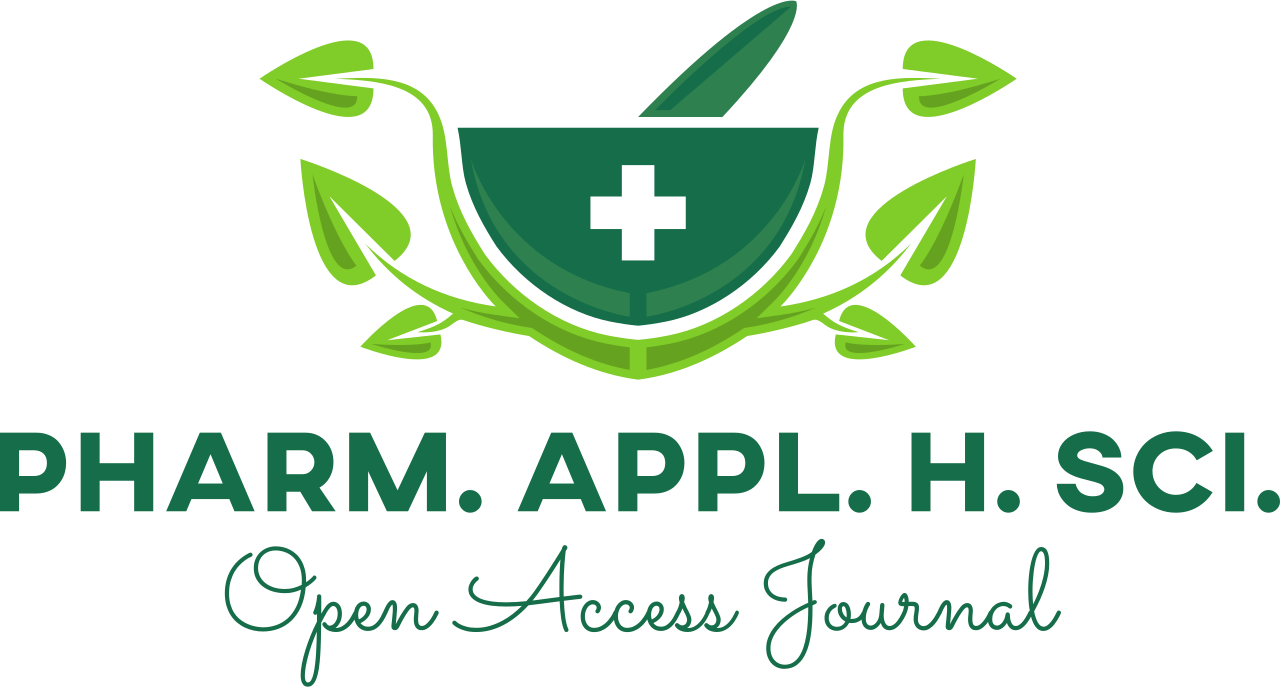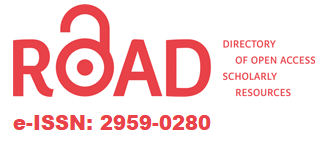Effect of Mint Leaves Powder (Mentha sp.) on Fungi Associated with Sunflower Helianthus annus L. Seeds
DOI:
https://doi.org/10.59480/phahs.v1i2.9Keywords:
Antifungal, Leaves powder, Mint, Sunflower seedAbstract
Sunflower Helianthus annus is one of the economically significant crops. During poor storage conditions, seed-borne fungi develop. As a result, it is polluted with mycotoxins and its quality is reduced for various uses Chemical and non-chemical methods to control fungal contamination were used. The current study examined the fungi associated with local products seeds and the antifungal activity of mint leaves powder (MLP) on seeds-borne isolates. Alternaria sp., Aspergillus sp., Cladosporium sp., Fusarium sp., Mucor sp., Penicillium sp., Pythium sp., Rhizopus sp., Trichoderma sp., were isolated from untreated seeds by moistened chamber method. Mixing MLP with sunflower seeds decreased the number of fungal isolates. Aspergillus, Mucor, Penicillium, Pythium, and Trichoderma disappear from tested seed samples after month. Also the seed germination% increase after mixing with MLP (not significant), it indicates that the treatment did not affect the embryo's vitality, the significant characteristic for the seeds that will be used for planting.
References
Vaidehi BK. Seed mycoflora of sunflower-a perspective. Frontiers in microbial biotechnology and plant pathology. 2002:25-40.
Morar MV, Dancea Z, Bele C, Salegean D, Beke A and Baonca I. An approach upon the qualities of the raw material and raw oil from sunflower seeds resulting in process of low capacities. Buletinul-Universitatii-de-Stiinte-Agricole-siMedicina-Veterinara-Cluj-Napoca-Seria-Agri. 2004;60:381-384.
Sharfun-Nahar MM and Hashmi MH., Seed-borne mycoflora of sunflower (Helianthus annuus L.). Pak. J. Bot. 2005;37(2):451-457.
Al-Musawi AT. Detection of mycotoxins in sunflower seed intended or edible for human consumption flower. IJABR. 2017;7(2):278-81.
Nazareth MS, Girish K and Fathima SK. Efficacy of herbal powders on seed mycoflora and seed quality of oilseeds. Journal of Biopesticides. 2018;11(2);106-113.
Singh R, Shushni MA and Belkhei, A. Antibacterial and antioxidant activities of Mentha piperita L. Arabian Journal of Chemistry.2015;8(3):322-328.
Kulik MM and Schoen JF. Procedures for the routine detection of seed-borne pathogenic fungi in the seed-testing laboratory. Journal of Seed Technology.1977;2(1):29-39.
Al-Bader SM. Characterization and evaluation Typha domingensis Pers.) of a fungal growth medium composed pollens powder of cattail. Innovaciencia Facultad de Ciencias Exactas Físicas Naturales. 2018;6(2):1-7.
Domsch KH, Gams W and Anderson TH. Compendium of soil fungi. Volume 1. Academic Press (London) Ltd 2018.
Watanabe T. Pictorial atlas of soil and seed fungi: morphologies of cultured fungi and key to species. CRC press 2002.
Al-Bader SM. The Hygienic Importance of Fungi Colonizing the Sheep Wool in Erbil/Iraq. Virology and Mycology. 2018;7(2):2-7.
Abdullah SK and Al-Mosawi KA. Fungi associated with seeds of sunflower (Helianthus annuus) cultivars grown in Iraq. Phytopathologia. 2010;57:11-20.
Soare E, Chiurciu IA. Considerations concerning worldwide production and marketing of sunflower seeds. Scientific Papers Series Management, Economic Engineering in Agriculture and Rural Development. 2018;18(3):421-7.
Abdulsalaam S and Shenge KC. Seed borne pathogens on farmer-saved sorghum (Sorghum bicolor L.) seeds. Journal of stored products and postharvest research. 2011;2(2):24-28.
López P, Venema D, de Rijk T, de Kok A, Scholten JM, Mol HG, de Nijs M. Occurrence of Alternaria toxins in food products in The Netherlands. Food Control. 2016 Feb 1;60:196-204.
Lević J, Stanković SŽ, Krnjaja V, Bočarov-Stančić AS and Ivanović D. Distribution frequency and incidence of seed-borne pathogens of some cereals and industrial crops in Serbia. Pesticidi I fitomedicina. 2012;27(1):33-40.
Al-Kassim MY and Monawar MN. Seed-borne fungi of some vegetable seeds in Gazan province and their chemical control. Saudi. J. Biol. Sci, 2000;7(2):179-184.
Ostry V. Alternaria mycotoxins: an overview of chemical characterization, producers, toxicity, analysis, and occurrence in foodstuffs. World Mycotox J. 2008;1:175–188.
Keller NP, Turner G. and Bennett JW. Fungal secondary metabolism—from biochemistry to genomics. Nature Reviews Microbiology.2005;3(12):937-947.
Alwatban MA, Hadi S and Moslem MA. Mycotoxin production in Cladosporium species influenced by temperature regimes. J. Pure Appl. Microbiol .2014;8(6):4061-4069.
Berthiller F, Crews C, Dall'Asta C, Saeger SD, Haesaert G, Karlovsky P, Oswald IP, Seefelder W, Speijers G and Stroka J. Masked mycotoxins: A review. Molecular nutrition & food research.2013;57(1);165-186.
Matthews KR, Kniel KE and Montville TJ. Food microbiology: an introduction.2017. John Wiley & Sons. ISBN978-1555819385.
Cardoza RE, et al. Identification of loci and functional characterization of trichothecene biosynthesis genes in filamentous fungi of the genus Trichoderma. Applied and environmental microbiology. 2011;77(14):4867-4877.
Hollmann M, Razzazi-Fazeli E, Grajewski J. et al. Detection of 3-nitropropionic acid and cytotoxicity in Mucor circinelloides. Mycotox Res. 2008;24:140–150.
Mancini V and Romanazzi G. Seed treatments to control seedborne fungal pathogens of vegetable crops. Pest management science.2014;70(6):860-868.
Sumalan RM, Kuganov R, Obistioiu D, Popescu I, Radulov I, Alexa E, Negrea M, Salimzoda AF, Sumalan RL, Cocan I. Molecules. Assessment of Mint, Basil, and Lavender Essential Oil Vapor-Phase in Antifungal Protection and Lemon Fruit Quality. 2020 Apr; 25(8):1831.
Saharkhiz MJ, Motamedi M, Zomorodian K, Pakshir K, Miri R and Hemyari K, 2012. Chemical composition, antifungal and antibiofilm activities of the essential oil of Mentha piperita L. International Scholarly Research Notices, 2012.
El-Shoraky FS and Shala AY. Antifungal activity of spearmint and peppermint essential oils against macrophomina root rot of cotton. Journal of Plant Protection and Pathology. 2018;9(11):775-78.
Downloads
Published
How to Cite
Issue
Section
License
Copyright (c) 2022 Salah M. Saleem

This work is licensed under a Creative Commons Attribution-NonCommercial-NoDerivatives 4.0 International License.
All PHAHS Journal articles are published under the terms of the Creative Commons Attribution-NonCommercial-NoDerivatives 4.0 International License (CC BY-NC-ND 4.0) which allows authors retain copyright and others may not use the material for commercial purposes. A commercial use is one primarily intended for commercial advantage or monetary compensation. If others remix, transform, or build upon the material, they may not distribute the modified material.
Copyright on any research article published by the PHAHS Open Access journal is retained by the author(s). Authors also grant any third party the right to use the article freely as long as its original authors, citation details and publisher are identified.
Use of the article in whole or part in any medium requires attribution suitable in form and content as follows: [Title of Article/Author/Journal Title and Volume/Issue. Copyright (c) [year] [copyright owner as specified in the Journal]. Links to the final article on PHAHS website are encouraged where applicable.
The CC BY-NC-ND 4.0 Creative Commons Attribution License does not affect the moral rights of authors, including without limitation the right not to have their work subjected to derogatory treatment. It also does not affect any other rights held by authors or third parties in the article, including trademark or patent rights, or the rights of privacy and publicity. Use of the article must not assert or imply, whether implicitly or explicitly, any connection with, endorsement or sponsorship of such use by the author, publisher or any other party associated with the article.










